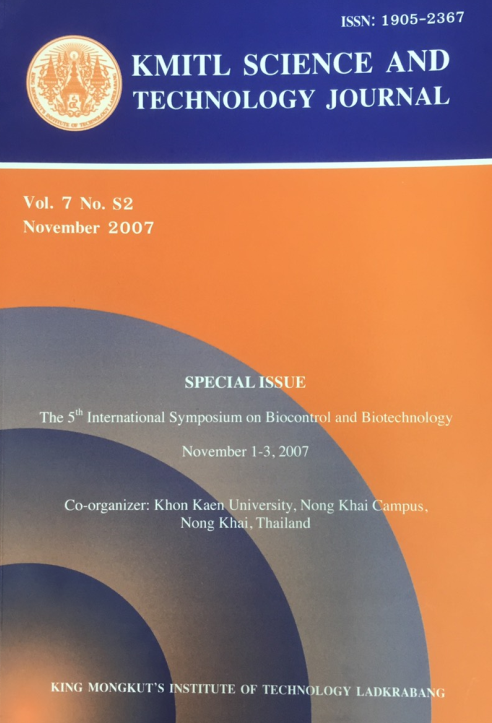SERICULTURE TECHNOLOGY OF FARMER NETWORK UNDER COMMUNITY REELING FACTORY
Main Article Content
Abstract
Community reeling factory has been established to solve the problems of reeling labors and improve the quality of Thai hybrid silk yarn in weaving industry. To find the fact of farmer network’s sericulture technology under community reeling factory is important to increase the chances of successful management. Research questionnaire data were collected from 180 farmers in Khon Kaen and Mahasarakarm provinces. The data were analyzed by descriptive statistics and t-test. The findings reveal that the majority of farmers were female, planting recommended mulberry variety namely Burirum 60 at the average production of 1,791.11 kg/rai/year, rearing silkworm variety namely Dogboe at the average of 6.22 crops/year and the average cocoon production of 183.20 kg/year. All farmers cultivated mulberries in their own lands at the average of 2.01 rai with 1,573.68 plants/rai. The majority of silkworm rearing technologies were at moderate level. Furthermore, the results between farmer network from Khon Kaen and Mahasarakarm provinces showed that there were highly significant differences in farmer age, land occupation, sericulture experience, number of mulberry plants/rai, mulberry age, mulberry production, rearing cycle and cocoon production/year.
Keywords: sericulture technology, farmer network, community reeling factory
Corresponding author: E-mail: kltippaw@kmitl.ac.th
Article Details
Copyright Transfer Statement
The copyright of this article is transferred to Current Applied Science and Technology journal with effect if and when the article is accepted for publication. The copyright transfer covers the exclusive right to reproduce and distribute the article, including reprints, translations, photographic reproductions, electronic form (offline, online) or any other reproductions of similar nature.
The author warrants that this contribution is original and that he/she has full power to make this grant. The author signs for and accepts responsibility for releasing this material on behalf of any and all co-authors.
Here is the link for download: Copyright transfer form.pdf
References
[2] Office of Agricultural Economics 2004 Draft sericulture development strategy. Bangkok, Ministry of Agriculture and Cooperatives.
[3] Development of Silk Production in the Northeast Project 2000 Introduction to Development of Silk Production in the Northeast. Khon Kaen, DEVSILK Project Management Unit, European Union.
[4] The Queen Sirikit 2006 Institute of Sericulture, Thai Sericulture, Bangkok, Ministry Agriculture and Cooperatives.
[5] Setho, S. 2003 Report on Silk Production of Farmer in Mahasarakarm Province: Case Study of Community Reeling Factory, Bannoonngarm. Mahasarakarm, Provincial Agricultural Extension.
[6] Miura Mikihiko. 2005 Present world silk situation and some comments on Thai silk. Shinshu, Shinshu university.
[7] Yamane, T. 1973 Statistics: An Introductory Analysis: Tokyo, Harper.


